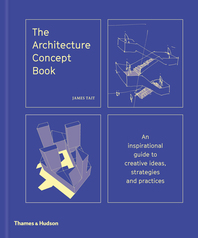Lerner: How do you get the public interested in things like real estate finance, construction, and engineering?
Whitaker: I think you have to do it partially as text, but partially as a picture show. You have to do it by letting the public know that this effort is going to go through a series of steps, and we’re going to bring the first problem to be solved within whatever period of time. Six weeks. And we will show you all the graphics with it, and then six weeks later, we’re going to bring you the next problem. And so on and so forth until you get through it.
I’ll go back to something I was showing when I was invited to RECORD to show you what we’d been doing with Next Steps, Hard Choices. And I kept being taken back to William Wilgus’s plan for Terminal City north of Grand Central. There wasn’t a lot of hyperbole about grand urban design schemes. They put in Park Avenue and stitched together the cross streets. And that infrastructure investment paid off handsomely because it gave developers specific sites to work on.
I think one of the things that needs to be done is that you need a plat for lower Manhattan. You know, in the 19th Century, when we were moving westward and creating cities out of whole cloth, oftentimes, the city fathers in a particular municipality would have a lithograph commissioned, a bird’s eye view of Salt Lake City or whatever other place we’re thinking about, and these lithographs would be sent back east so that prospective settlers could get a picture of what this place was going to be like. But you’d often see these lithographs with three or four principal buildings in them. In the case of Salt Lake City, this was the Mormon Temple and a couple of other public buildings. And then a scattering of other buildings that had been built, the clear invitation to settlers being "there’s a lot for you." But it was also the way, I think, that urban design really works. You have to create a plat, a site plan, on which people can build. This happens all the time, for instance, in the suburbs. You’ll find a development that may be built out over five, six years, but the first step with the planning board is a site plan.
So part of the reason that the public reaction to the LMDC proposals was so intensely negative is that without defining the falseness of the solutions, you know in your gut that a building that may not be built for thirty years is going to be a very different building than what the architects are showing today. It’s kind of unreal for people to be deciding today whether this building should be 45 stories or 62 stories.
Lerner: Who should be in charge now? Should this be zoned and parceled out to developers?
Whitaker: Well, you can make a plat that’s an interesting plat. People started immediately talking after 9/11 about how this was a wonderful opportunity to stitch together the streets, because the World Trade Center was a classic example of superblock, tower-in-a-park planning. And there’s a very powerful argument that can be made for reestablishing a good part of the street grid. One is that from an architect’s point of view, it gives better scale. Jane Jacobs discovered this in the 1960s in Greenwich Village, but we have to keep going back and relearning the lesson. Smaller blocks were more interesting: more corners, more opportunity for interesting stores. Another reason is that the more choices a motorist or a pedestrian has, the less crowding there is.
Lerner: Do you think part of the negative public reaction is the grand "here’s what’s going in here" gesture that in one fell swoop, the LMDC is planning the whole site?
Whitaker: Yes, I think you put it very well. I think we need to go back to the really tough, grubby, step-by-step process of rebuilding that part of the city. I also think it’s in the various political figures’ interest to begin to show some momentum.
I also think that with each of these "packets," as I guess I’m now calling them of information or discussion or choices that need to be made, you need to show the public what the consequences are. I go back to the PATH station. If they locate it where it is now, who is going to pay for the columns that they have to put in, and what are those columns going to be for? Or are we going to create, by default, a large swath above the station that won’t be built on, because it will be nearly impossible to go in and ask the commuter waiting for the next train to Hoboken to please move over because we’re going to drill a caisson next to where he’s standing?




















